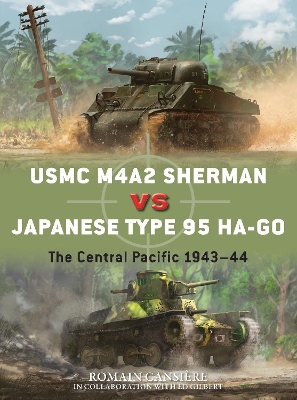The different national tank doctrines of the United States and Imperial Japan resulted in a terrible mismatch of the predominant tank types in the crucial Central Pacific campaign. A flawed Japanese doctrine emphasized light infantry support tanks, often used in small numbers. Tactically, tanks were often frittered away in armored versions of the familiar banzai attacks. Meanwhile, the Americans saw the tank as an infantry support weapon, but developed a more systematic tactical doctrine. They settled upon a larger medium tank - in the case of most Marine Corps tank battalions, the diesel-powered M4A2 (unwanted by the US Army).
This superbly detailed title reveals how both the two sides' tactical and technical differences in the approach to armored warfare soon became apparent over a series of deadly engagements, from the first tank fight at the battle of Tarawa in November 1943, through to engagements on Parry Island, Saipan, and Guam, before ending with Peleliu in September 1944.
- ISBN10 1472840119
- ISBN13 9781472840110
- Publish Date 18 February 2021
- Publish Status Active
- Out of Print 3 March 2021
- Publish Country GB
- Publisher Bloomsbury Publishing PLC
- Imprint Osprey Publishing
- Format Paperback
- Pages 80
- Language English
